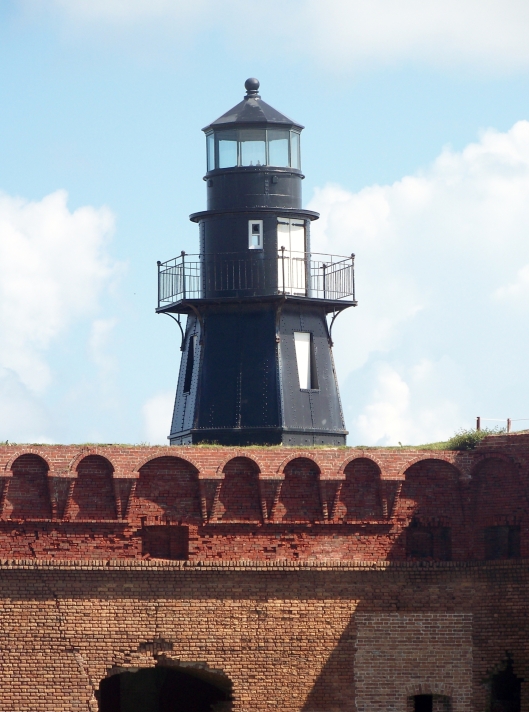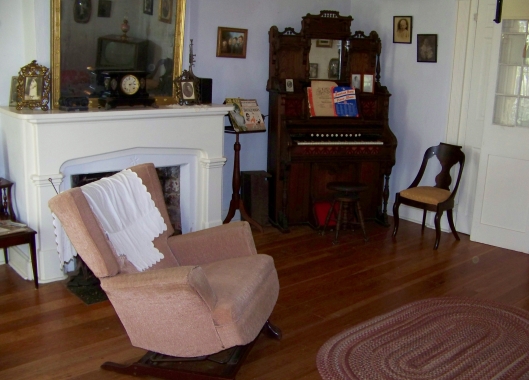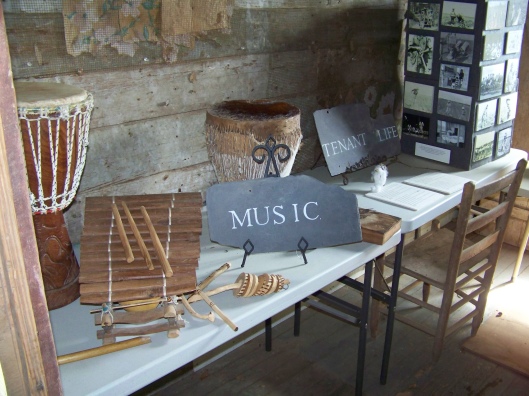Tags
Fort Jefferson and Dry Tortugas National Park
Not so long ago, an article showed up on my Facebook news feed concerning the challenges of the National Park Service as it looks into the future of Fort Jefferson located at the Dry Tortugas. Reading the article, I was reminded of one of the most memorable trips we have ever made to a national park. In 2009 Jim and I, along with my sister and her husband, traveled to Fort Jefferson and Dry Tortugas Natiional Park. What a jewel…how beautiful this place truly is!
To reach the Dry Tortugas we boarded a ferry in Key West, FL for the seventy mile trip out to the park. The scenery was astonishing, the color of the water those brilliant shades of aquamarine you have always believed were artificially enhanced when seen on photographs. Looking into the water you realize it really is that deep, rich color, it really is that beautiful! The water is so clear you can see schools of fish almost as clearly as if you were in the water with them. You also see dolphins, pelicans and other birds. It is a marvelous trip!
Fort Jefferson is situated on Garden Key, one of the seven keys which make up Dry Tortugas National Park. It is the largest all-masonry fort in the United States, so large that the entire playing field of Yankee Stadium would fit within its walls. Construction on this massive fort was begun in 1846 for the purpose of helping to control shipping that entered the Gulf of Mexico from the Atlantic Ocean. It was, however, never finished due to problems with settling of the heavy structure. The weather has always been a problem at Fort Jefferson, and the structure has been in almost constant need of repair.
In addition to helping the United States control its interests in the shipping that entered the Gulf of Mexico, Fort Jefferson also served for a time as a military prison. While Florida became the third state to secede from the Union, Fort Jefferson remained under the control of the United States. Perhaps its most famous prisoner was Dr. Samuel Mudd, convicted for aiding and conspiring with John Wilkes Booth in the assassination of President Abraham Lincoln.
Its most imposing feature as you approach is the lighthouse that was erected in 1825 to warn ships entering the Gulf from the Atlantic Ocean of the dangerous coral reefs in the area. As you near the fort you will notice Loggerhead Key where a new, more powerful, lighthouse was built in 1858. The lighthouse on Loggerhead is still operational today and is under the authority of the US Coast Guard.

The lighthouse at Loggerhead Key was built in 1858. Loggerhead Key is protected as a nesting site for Loggerhead turtles, who return to the Key each year to lay their eggs.

Other keys in the Dry Tortugas are closed for parts of the year to allow for the nesting of various birds.
In addition to enjoying the ferry ride and visiting the fort, visitors to Dry Tortugas National Park can camp overnight on the grounds, do some snorkeling(as I did, my first time ever!), fish or do some birdwatching. You can learn more about Fort Jefferson and the Dry Tortugas at the National Park Service site, http://www.nps.gov/drto/index.htm.
You can learn more about the ferry to the Dry Tortugas at http://www.drytortugas.com/?gclid=CJqAxl-1678CFSxk7AodMncAiA.
The Dry Tortugas and Climate Change
Whether or not we want to accept, or even believe it, climate change, whatever the reason, is occurring. And in the face of this change, all of us will need to adapt in one way or another. The National Park Service is also responding to the reality of climate change and trying to make plans that will deal with its effects, preserving our parks as best they can.
Fort Jefferson sits on a small key, a small island, and has always been vulnerable to the storms and tides of the Atlantic Ocean and the Gulf of Mexico. Understanding that makes it easy to see why the prospect of a sea level rise of anywhere from .06 to 1.2 meters at Dry Tortugas over the next one hundred years poses great challenges for the agency charged with its maintenance and preservation.

The National Park Service reported in 2010 that parts of the structure have already fallen into this moat which surrounds the fort.
There are many issues to be considered as the Park Service makes its decisions. Courses of action that might be taken to save the fort, such as dredging, may very well cause extensive damage to the environment. As we all learn to cope with changes in our world, in our environment, in our special and our sacred places. let us all hope we get this right. It is going to be a big job and we need to be up to the challenge.
You can read the report on climate change at the Dry Tortugas from the National Park Service at http://ncptt.nps.gov/blog/climate-change-at-dry-tortugas/.
Picadillo on Cubano Bread
As we were traveling through the Florida Keys to Key West where we boarded the ferry to Dry Tortugas National Park, I picked up a cookbook at one of the tourist stops we made (but that is for another posting). Keys Cuisine was written by Linda Gassenheime and was published in 1991 by Atlantic Monthly Press. The book is full of great recipes from the Keys, highlighting its special foods as well as its ethnic diversity.
This recipe for Picadillo is slightly adapted from a recipe in Key Cuisine. Picadillo is said to be the original sloppy joe. My husband and I think it is much better than any sloppy joe we have ever had. I make my own Cubano bread and you can find the recipe I use at http://www.icuban.com/food/pan_cubano2.html.
Picadillo
- 1 Tbsp. olive oil
- 1/2 medium onion, chopped
- 2 cloves garlic, minced
- 1 small green pepper, diced (or 1/2 of a large pepper)
- 1 pound ground beef
- 1-15 oz. can tomato sauce
- 1/4 cup olives, sliced
- 1 1/2 Tbsp. capers
- 2 Tbsp. Worcestershire sauce
- 2 Tbsp. vinegar
- salt and pepper to taste
Heat the oil in a pan at medium high. Add the onions and saute’ them until they are golden brown, about 15 minutes. You may have to lower the heat as the onions saute’. Lower the heat to medium, add the garlic and green pepper and saute’ 5 more minutes. Add the ground beef and continue cooking until the meat has browned. Mix in the tomato sauce. Add the remaining ingredients and continue cooking until the meat is completely done, about 15 minutes. Serves 4
I hollow out big slices of the Cubano bread and fill them with the Picadillo. Together with a green salad and a class of white wine, this makes a really good supper. Enjoy!







































